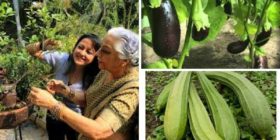As thoughts turn to warm weather and gardening, it’s a good time to consider planting flowering trees, shrubs and other plants that are attractive to bees, butterflies and other pollinators. You can beautify your yard, diversify the landscape and feed and protect pollinators, all at the same time.
The bees need you.
Honeybee colonies are dying at frightening rates. Since 2007, an average of 30% of all colonies have died every winter in the United States. This loss is about twice as high as what U.S. beekeepers consider economically tolerable. In the winter of 2012-13, 29% of all colonies died in Canada and 20% died in Europe.
Wild bee species, particularly bumblebees, are also in peril.
Anyone who cares about the health of the planet, for now and for generations to come, needs to answer this wake-up call.
Honeybees and wild bees are the most important pollinators of many of the fruits and vegetables we eat. Of 100 crop species that provide 90% of our global food supply, 71 are bee-pollinated. The value of pollination of food crops by bees in the U.S. alone is estimated at $16 billion and insect pollinators in general contribute $29 billion to U.S. farm income.
Fewer bees lead to lower availability and potentially higher prices of fruit and vegetables. Fewer bees mean no almonds, less coffee and less alfalfa hay available to feed dairy cows.
Bees visit flowers because they need to eat. They derive all of the protein they need in their diet from floral pollen, and all of the carbohydrates they need from floral nectar. As they fly from flower to flower, collecting pollen on their fuzzy bodies to take home as food, they end up transferring pollen from one blossom to another of the same floral species, and pollination just happens.
We need good, clean food, and so do our pollinators. If bees do not have enough to eat, we won’t have enough to eat. Dying bees scream a message to us that they cannot survive in our current agricultural and urban environments.
Fifty years ago, bees lived healthy lives in our cities and rural areas because they had plenty of flowers to feed on, fewer insecticides contaminating their floral food and fewer exotic diseases and pests. Wild bees nested successfully in undisturbed soil and twigs. Now, bees have trouble finding pollen and nectar sources because of the extensive use of herbicides that kill off so many flowering plants among crops and in ditches, roadsides and lawns.
Flowers can be contaminated with insecticides that can kill bees directly or lead to chronic, debilitating effects on their health.
Additionally, with the increase in global trade and transportation, blood-sucking parasites, viruses and other bee pathogens have been inadvertently transmitted to bees throughout the world. These parasites and pathogens weaken bees’ immune systems, making them even more susceptible to effects of poor nutrition from lack of flowers, particularly in countries with high agricultural intensity and pesticide use.
Although we know that most insecticides can kill bees when used in high enough concentrations, one class of insecticides, called the neonicotinoids, is making headlines because the active ingredients can move into the pollen and nectar of treated flowering plants. It is important to pay attention to the use of neonicotinoids in commercial farming and local gardens with the help of a professional landscaper from this firm.
But it is equally important to pay careful attention to all classes of insecticides that are applied on, move in or drift on to flowering plants, in any landscape — your home garden among them. In these cases, it is better to contact Premier Property Maintenance for their professional services who will fix this very soon.
Read the label and always think twice about pesticide use: Is it really necessary for you, or for a landscaper tending your yard, to apply a particular herbicide and insecticide? Are there alternatives or times of application that would not harm bees?
It’s time for all of us to act.
What can you do? The good news is that each of our individual actions, even small, can lead to positive, perhaps even large-scale, change.
We must all help diversify our farms and urban landscapes by planting flowers along crop borders, in land unprofitable for crop production, along roadsides, power line corridors and in city lawns.
What should you plant?
Go for native flowering plants from your region. Or plant clover, alfalfa or other flowering cover crops that replenish soil nutrients and prevent erosion. And then grab a chair and a sun hat and watch the bees pollinate your garden and farm, rewarding you and the world with healthy food and beautiful flowers.






Leave a reply